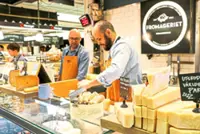Many restaurants introduce specials on the menu to ensure the menu doesn’t remain stale. — TABLE & APRON
Fidelity is not something that is often associated with restaurants. Customers are fickle and in need of shiny, new meals all the time and they’ll find it wherever they can. A restaurant that is incredibly alluring when it first opens may find this appeal wearing thin as the years go by and age catches up. This is why most eateries have to constantly innovate and strive to stay ahead of the game in order to succeed in the long-run.
For many restaurants, this often means coming up with a multitude of new dishes – whether that’s a special of the day, a special of the month, a menu facelift or even a total overhaul. This change is particularly crucial for restaurants looking to remain relevant in an age where loyalty is no longer a given.
Already a subscriber? Log in
Save 30% OFF The Star Digital Access
Cancel anytime. Ad-free. Unlimited access with perks.





